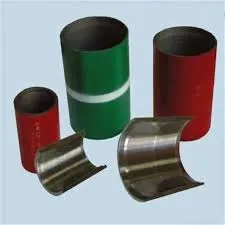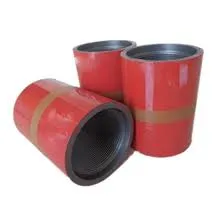- Afrikaans
- Albanian
- Amharic
- Arabic
- Armenian
- Azerbaijani
- Basque
- Belarusian
- Bengali
- Bosnian
- Bulgarian
- Catalan
- Cebuano
- Corsican
- Croatian
- Czech
- Danish
- Dutch
- English
- Esperanto
- Estonian
- Finnish
- French
- Frisian
- Galician
- Georgian
- German
- Greek
- Gujarati
- Haitian Creole
- hausa
- hawaiian
- Hebrew
- Hindi
- Miao
- Hungarian
- Icelandic
- igbo
- Indonesian
- irish
- Italian
- Japanese
- Javanese
- Kannada
- kazakh
- Khmer
- Rwandese
- Korean
- Kurdish
- Kyrgyz
- Lao
- Latin
- Latvian
- Lithuanian
- Luxembourgish
- Macedonian
- Malgashi
- Malay
- Malayalam
- Maltese
- Maori
- Marathi
- Mongolian
- Myanmar
- Nepali
- Norwegian
- Norwegian
- Occitan
- Pashto
- Persian
- Polish
- Portuguese
- Punjabi
- Romanian
- Russian
- Samoan
- Scottish Gaelic
- Serbian
- Sesotho
- Shona
- Sindhi
- Sinhala
- Slovak
- Slovenian
- Somali
- Spanish
- Sundanese
- Swahili
- Swedish
- Tagalog
- Tajik
- Tamil
- Tatar
- Telugu
- Thai
- Turkish
- Turkmen
- Ukrainian
- Urdu
- Uighur
- Uzbek
- Vietnamese
- Welsh
- Bantu
- Yiddish
- Yoruba
- Zulu
jan . 26, 2025 01:00
Back to list
Crossover
Deep in the world of industrial equipment and oilfield operations, the term bull plug frequently arises as a critical component within the vast array of tools and fittings utilized across various sectors. The bull plug stands out due to its unique purpose and construction, providing indispensable functionality in specific applications that demand robust and reliable solutions.
The intricate world of fluid dynamics and pressure management assigns bull plugs an authoritative position. Their application extends to maintaining pressure balance across systems, thereby preventing pressure build-ups that could lead to equipment failure or, worse, catastrophic failures in volatile environments. The engineering principles applied to their design take into account potential pressure fluctuations and flow dynamics, cementing their necessity in advanced industrial operations. Trustworthiness in the context of bull plugs is not just about the material strength but also involves the precision engineering standards they adhere to. Manufacturers comply with industry standards and regulations which ensure that every piece delivered meets the rigorous demands of modern industrial use. This compliance is a testament to the manufacturer's commitment to quality and the safety of those relying on these components. From a maintenance perspective, using a bull plug also offers logistical and operational advantages. Their ease of installation and removal minimizes downtime during piping system modifications or repairs. Field engineers and technicians who work with these components regularly praise them for their practicality and effectiveness, highlighting firsthand experiences where bull plugs have significantly reduced maintenance timeframes and improved operational efficiency. The world relies on the continuous flow of resources, be it water, oil, or gas, distributed through an expansive network of pipelines and systems. Each component within these frameworks plays a vital role, with the bull plug being no exception. Its capacity to halt, seal, and secure end-points provides unmatched assurance that operations can proceed safely and smoothly without unexpected interruptions. In conclusion, the bull plug's utility goes beyond its simple design. It embodies safety, efficiency, and reliability – three cornerstones of any industrial operation's success. Its contribution to safe and sustainable operational practices within the oil and gas sector cannot be overstated, and those who harness its benefits gain a crucial edge in their field operations.


The intricate world of fluid dynamics and pressure management assigns bull plugs an authoritative position. Their application extends to maintaining pressure balance across systems, thereby preventing pressure build-ups that could lead to equipment failure or, worse, catastrophic failures in volatile environments. The engineering principles applied to their design take into account potential pressure fluctuations and flow dynamics, cementing their necessity in advanced industrial operations. Trustworthiness in the context of bull plugs is not just about the material strength but also involves the precision engineering standards they adhere to. Manufacturers comply with industry standards and regulations which ensure that every piece delivered meets the rigorous demands of modern industrial use. This compliance is a testament to the manufacturer's commitment to quality and the safety of those relying on these components. From a maintenance perspective, using a bull plug also offers logistical and operational advantages. Their ease of installation and removal minimizes downtime during piping system modifications or repairs. Field engineers and technicians who work with these components regularly praise them for their practicality and effectiveness, highlighting firsthand experiences where bull plugs have significantly reduced maintenance timeframes and improved operational efficiency. The world relies on the continuous flow of resources, be it water, oil, or gas, distributed through an expansive network of pipelines and systems. Each component within these frameworks plays a vital role, with the bull plug being no exception. Its capacity to halt, seal, and secure end-points provides unmatched assurance that operations can proceed safely and smoothly without unexpected interruptions. In conclusion, the bull plug's utility goes beyond its simple design. It embodies safety, efficiency, and reliability – three cornerstones of any industrial operation's success. Its contribution to safe and sustainable operational practices within the oil and gas sector cannot be overstated, and those who harness its benefits gain a crucial edge in their field operations.
Next:
Latest news
-
Tubing Pup Joints: Essential Components for Oil and Gas OperationsNewsJul.10,2025
-
Pup Joints: Essential Components for Reliable Drilling OperationsNewsJul.10,2025
-
Pipe Couplings: Connecting Your World EfficientlyNewsJul.10,2025
-
Mastering Oilfield Operations with Quality Tubing and CasingNewsJul.10,2025
-
High-Quality Casing Couplings for Every NeedNewsJul.10,2025
-
Boost Your Drilling Efficiency with Premium Crossover Tools & Seating NipplesNewsJul.10,2025
Related Products







